The construction site is unpredictable, bringing unpredictable weather conditions like unanticipated rain showers. Surprisingly, rainfall doesn't halt operations for many construction projects, as the tight deadlines and high costs associated don't allow for much downtime. Thus, it's essential for construction workers to have reliable rain gear that's not only waterproof but also durable, comfortable, and safe. This comprehensive guide will discuss all the critical aspects of proper rain gear for construction workers with a particular emphasis on durability.
Key Factors to Consider in Rain Gear Selection
Keeping dry amidst stormy weather is no small feat, and your success rests on your rain gear selection. Among myriad choices - jackets, trench coats, rain pants, and more - ensuring you choose the right equipment requires attention to several crucial factors. After all, dodging puddles and forging through torrents needs more than mere luck. In this section, we'll guide you through four key factors to consider when choosing your rain gear - material and durability, functionality, weight, and additional safety features.
Material and Durability
Rain gear is only as effective as the material it's made from. Without a robust, highly water-resistant material, you could end up uncomfortably damp. Consider rain gear designed with GORE-TEX Paclite 2L material. Renowned for its excellent waterproof protection, it carries an impressive rating of 28,000mm/24 hours. The superior durability and remarkable moisture resistance make it a viable option for the toughest downpours.
Functionality
Don't sacrifice convenience for protection. An outstanding rain outfit should be both waterproof and user-friendly. Look for rain gear that is easy to slip on and off, with pockets strategically positioned for easy access. Moreover, consider gear with adjustable features such as cuffs, collars, or hoods to provide a custom and comfortable fit.
Weight
If you're engaging in physical activities like hiking or jogging, the weight of your rain gear becomes crucial. Lighter materials can grant you flexibility and prevent the clothing from bogging you down. One noteworthy factor is that high quality doesn’t necessarily correlate with heavier weight. Even lightweight materials can be exceptionally durable and sufficiently water-resistant.
Additional Safety Features
For those that work outdoors or in potentially hazardous environments, rain gear may need to double up on safety features. Choose gear that offers extra visibility and protection such as arc-rated rain gear and ANSI Class 3 rain suits, particularly popular in construction sites. You might also want to consider PFAS-free options as a non-toxic alternative to traditional rain gear materials, assuring safety not only from the rain but harmful chemicals as well.
When purchasing your next rain gear, prioritize these factors. Cap it all with your personal preference in style, and you're bound to stay dry while looking fabulous, even in the hardest rain.
Weight As Part of the Assessment
When it comes to selecting the perfect rain gear for construction sites, there's little doubt that comfort, durability, and protection rank among your top considerations. But did you know that the weight of your rain gear might play an even more crucial role than you've been according? It's time to dive into this underrated aspect of your rain gear selection process!
The weight of your rain gear can significantly impact both its wearability and performance. No one wants to lug around in a heavy outfit that adds unnecessary strain and fatigue. The following points delve into why you should consider weight as an integral part of your assessment when choosing rain gear for construction sites:
- Ease of Movement: The lighter your rain gear, the easier it is to move around in. Heavy rain gear can restrict your movements, potentially affecting your performance and productivity on the job.
- Comfort: Comfort often goes hand-in-hand with the weight of your gear. Lightweight rain gear is typically more comfortable to wear, which can make a significant difference during long hours at a construction site.
- Transportability: When rain gear is lighter, it's easier to transport from one construction site to another. This adaptability is particularly beneficial if you're regularly on the move.
- Reduces Fatigue: Carrying extra weight for extended periods can lead to increased fatigue. Lighter gear reduces this risk, keeping you fresher for longer during your working day.
Going through this evaluation, the importance of rain gear's weight becomes evident. Therefore, dismissing it might lead to a choice that hampers your efficiency and comfort levels on the job. Remember, when selecting rain gear, balance is key—striking the right balance between weight, durability, and protection will ensure you have the right gear to keep you safe and productive, even in the harshest weather.
Innovations and Advancements in Rain Gear Materials
As we take shelter from the downpour, it's time to delve into the fascinating world of advancements in rain gear materials. Modern technology has indeed transformed our umbrellas, settled comfortably onto our raincoats, and perched itself smartly on our boots, shaping the way we gear up to face the waves from the skies. Rain gear has evolved far beyond just keeping us dry, it now extends its bountiful offerings towards climatic adaptability, superior comfort, optimal defense, and sleek design. The inclusion of breathable fabrics, stretch materials, and unique waterproof technologies such as Ventia™, have revolutionized the landscape of rain gear production.
Breathable Fabrics
Who would not want to wear a rain suit that is not only impermeable to water but also keeps you cool? The introduction of breathable fabrics such as nylon and polyester has indeed improved comfort and performance in rain gear construction. Crafted with delicate yet potent procedures, these fabrics enhance the suit's breathability. Breathable rain gear unveils the beauty of staying cool while ensuring you remain dry in damp conditions.
Note: The capacity of these breathable fabrics to wick away moisture from your skin, successfully fluctuates the analogy of a detailed internal atmosphere control system.
Stretch Fabrics for Flexibility
The march of innovation didn't stop at breathability. The initiation of stretch fabrics signified a resurrection in rain gear, birthing unprecedented flexibility and ease of movement. Like a second skin, stretch fabrics twine smoothly along your body's curves, enhancing the freedom of movement without restricting you. One perfect example is the HH Gale jacket, a symbol of the innovative use of stretch fabrics in rain gear.
- Expertly crafted with bipartisan stretch fabrics, this garment truly exemplifies ease in action.
- It is ergonomically designed to accompany your body’s motion and it's tougher, yet flexible structure bestows upon you the art of versatile mobility.
Ventia™ Waterproof Technology
Undoubtedly, our exploration wouldn't be complete without acknowledging a ground-breaking name in rain gear technology: Ventia™. Forecasted as a breath of fresh air, this latterly introduced waterproof construction technology brings about breathable, storm-worthy protection.
Ventia™ dramatically improves the performance efficiency of rain gear. The technology functions by the principle of allowing perspiration to escape while repelling external moisture, striking an excellent balance between comfort and protection.
Wrapping up our insightful venture into the universe of rain gear materials, it's safe to say advancements have bestowed us with innovation that's both practical and comfortable. Next time you step outside on a rainy day, appreciate the clever science expertly woven into your gear.
Importance of High-Quality Construction Safety Gear
Promoting a safe and hazard-free work environment has always been an integral part of the construction industry, and high-quality safety gear plays a vital role in achieving this goal. Investing in valuable safety equipment such as hi-vis rain gear not only ensures the well-being of the construction workers but also contributes to enhanced job site productivity. With that in mind, understanding the significance and the advantages of using top-notch safety gear in construction becomes a top priority.
Let's first shed some light on why prioritizing high-quality safety gear in construction settings is so crucial. During construction work, workers are exposed to numerous hazards ranging from falling debris to hazardous weather conditions. Now, being equipped with substandard safety gear in such an environment can lead to accidents and injuries on the site. Consequently, compromising with the quality of safety gear is tantamount to playing with the lives of your workers.
Superior safety gear, on the other hand, offers:
- Enhanced Protection: High-quality safety gear provides better protection against the various hazards that construction workers frequently encounter. This includes falling objects, sharp edges, electric shock, bad weather, and numerous other dangers.
- Improved Visibility: In busy construction sites, the risk of accidents heightens due to reduced visibility. By using items like hi-vis rain gear, workers can be clearly seen even in tricky lighting conditions or bad weather. It significantly minimizes the risk of accidents caused by limited visibility.
- Increased Productivity: Safety gear that fits properly and is comfortable for prolonged use allows workers to perform their duties more efficiently. This increase in comfort leads to increased job site productivity.
Essentially, the importance of durable safety gear in the construction industry cannot be overlooked. Investing sufficiently in such equipment displays a company’s commitment to the safety and well-being of their workers. It also sends a strong message to potential clients about the company's professionalism and willingness to abide by the highest safety standards.
Therefore, when considering construction work, it's not just about erecting buildings or infrastructure. It's also about safeguarding the lives of those who work tirelessly to construct our surroundings. A minor investment in high-quality safety gear can save numerous lives, improve productivity, and contribute to the overall success of a construction project. After all, in the construction industry, safety and productivity go hand in hand.
Toxic Compounds in Rain Gear
Given that rain gear is essential for protection from harsh weather conditions, most of us don't stop to consider what these items are made from—namely, the unfriendly-to-environment compounds. As it turns out, some rain gear contains potentially harmful chemicals, such as lead or cadmium. Their presence underscores the importance of being mindful when choosing our rain gear, ensuring we opt for options which are not only effective but also safe and non-toxic.
Tracing The Danger
Lead and cadmium, high on the list of harmful chemicals, have made their way into some tested rain gear. Lead, associated with developmental and behavioral issues in children, is an unwelcome surprise in these weather-resistant outfits. Similarly, cadmium, linked to bone and kidney diseases, makes its presence known without welcome. Let's dig a little deeper into these disturbing discoveries:
- Lead in Rain Gear
- Cadmium in Rain Gear
The unexpected and alarming presence of lead in some rain gear moves the discourse from mere weather protection to a health risk conversation. In a bid to add durability and color stabilization, manufacturers may unwittingly open a Pandora's Box of potential health hazards—especially for children who are more susceptible to the adverse effects of lead.
Cadmium’s insinuating presence in rain gear offers a grim reminder of the lengths some manufacturers might go in their bid to make their products more appealing. Often used to create vibrant colors, this toxic metal may unknowingly be brought close to our skin, posing a significant health concern.
The Call for Non-Toxic Choices
The knowledge of toxic compounds in rain gear urges us to become mindful consumers. It's essential to prioritize safety above aesthetic or economic concerns. It calls for seeking out manufacturers committed to both the fashion and function of their products, discouraging the use of harmful chemicals, and advocating for non-toxic alternatives. In doing so, not only do we protect ourselves and our loved ones from potential health hazards, but we also contribute towards an eco-friendly solution to rain gear production. It's about embracing an attitude that favors human health and environmental preservation over anything else.
In setting a new trend for safe and non-toxic rain gear, we must push for regulating bodies to conduct and implement strict safety measures for production. And above all, consistently opt for products with transparent and safe manufacturing standards.
Let's understand that our consumer choices significantly determine the market landscape. By vowing to pick only protective, long-lasting, and non-toxic rain gear, we can kickstart a ripple of positive change within the industry. After all, guarding against the rain shouldn't mean opening up a whole new avenue of unforeseen hazards.
Conclusion
Opting for high-quality, durable rain gear is an investment in safety and comfort. Construction workers, in particular, require premium gear that offers superior defense against the elements. This gear should additionally allow for unrestricted movement, enhancing work efficiency.
From weight consideration to the use of innovative materials and additional safety features, multiple aspects culminate in the creation of an exceptional rain gear. It is a fusion of research, technology, and careful design—coupled with a deep understanding of the user's needs—that manufactures products able to withstand demanding work environments.
At the end of it all, robust rain gear doesn't merely promise to keep you dry under the rain. It enhances job performance, boosts comfort, and ensures safety—acting as an unwavering line of defense against harsh weather conditions. Therefore, it's important to choose wisely the gear you're going to wear every day.
Recognizing the significance of these facets, Hurricane Raingear provides top-of-the-line, handcrafted rain gear with an optimal balance between dryness, comfort, and visibility. For more information, feel free to explore our extensive collection of rain gear. Rest assured, each product we offer is designed to withstand every storm you encounter here.
Remember, the best rain gear for construction workers has to be more than just waterproof. Exactly how much more is a decision that rests upon each individual's specific needs and preferences. Make your decision with knowledge and care, understanding that a strong defense is the best basis for amping up productivity and safety on a rainy workday.
Frequently Asked Questions
-
What types of rain gear are durable for construction workers?
Construction workers should look for rain gear made of durable materials such as PVC, ripstop nylon, or polyester with a waterproof coating. These materials are known for their strength and resistance to tears and abrasions.
-
Are there specific features to consider for durability in rain gear for construction workers?
Yes, some important features to consider for durability in rain gear for construction workers include reinforced seams, heavy-duty zippers, adjustable cuffs and hems, and double-layered or reinforced areas in high-stress areas like elbows and knees.
-
How can I ensure the longevity of my rain gear for construction workers?
To ensure the longevity of your rain gear, it is important to follow the manufacturer's care instructions and properly maintain the gear. Avoid prolonged exposure to sunlight, chemicals, or harsh cleaning agents, and repair any small damages promptly to prevent further deterioration.
-
Are there any specific brands known for producing durable rain gear for construction workers?
Yes, some popular brands known for producing durable rain gear for construction workers are Carhartt, Helly Hansen, Grundens, and Caterpillar. These brands are known for their quality and trusted by many professionals in the industry.
-
Can I use regular rain gear for construction work?
While regular rain gear may provide some protection, it may not be as durable or suitable for the demanding conditions of construction work. It is best to invest in rain gear specifically designed for construction workers, as it will be designed to withstand the rigors of the job and provide maximum durability and comfort.



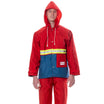
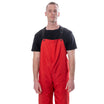
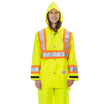
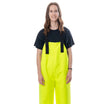
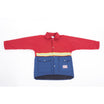
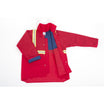
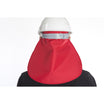
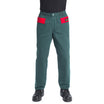
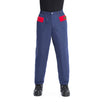
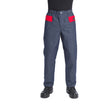
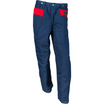
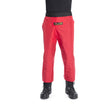
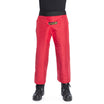
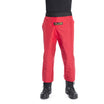
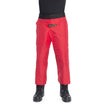
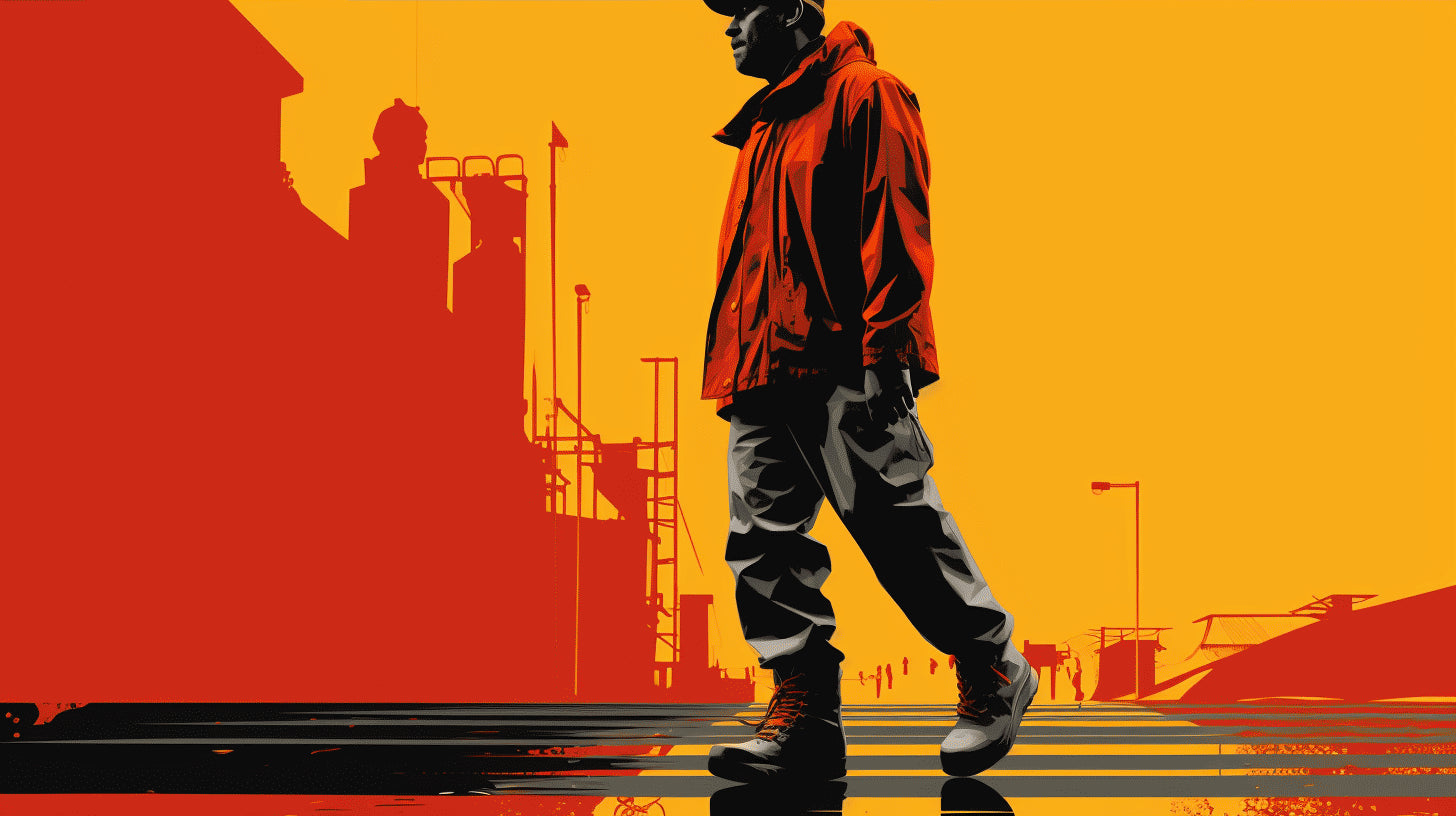
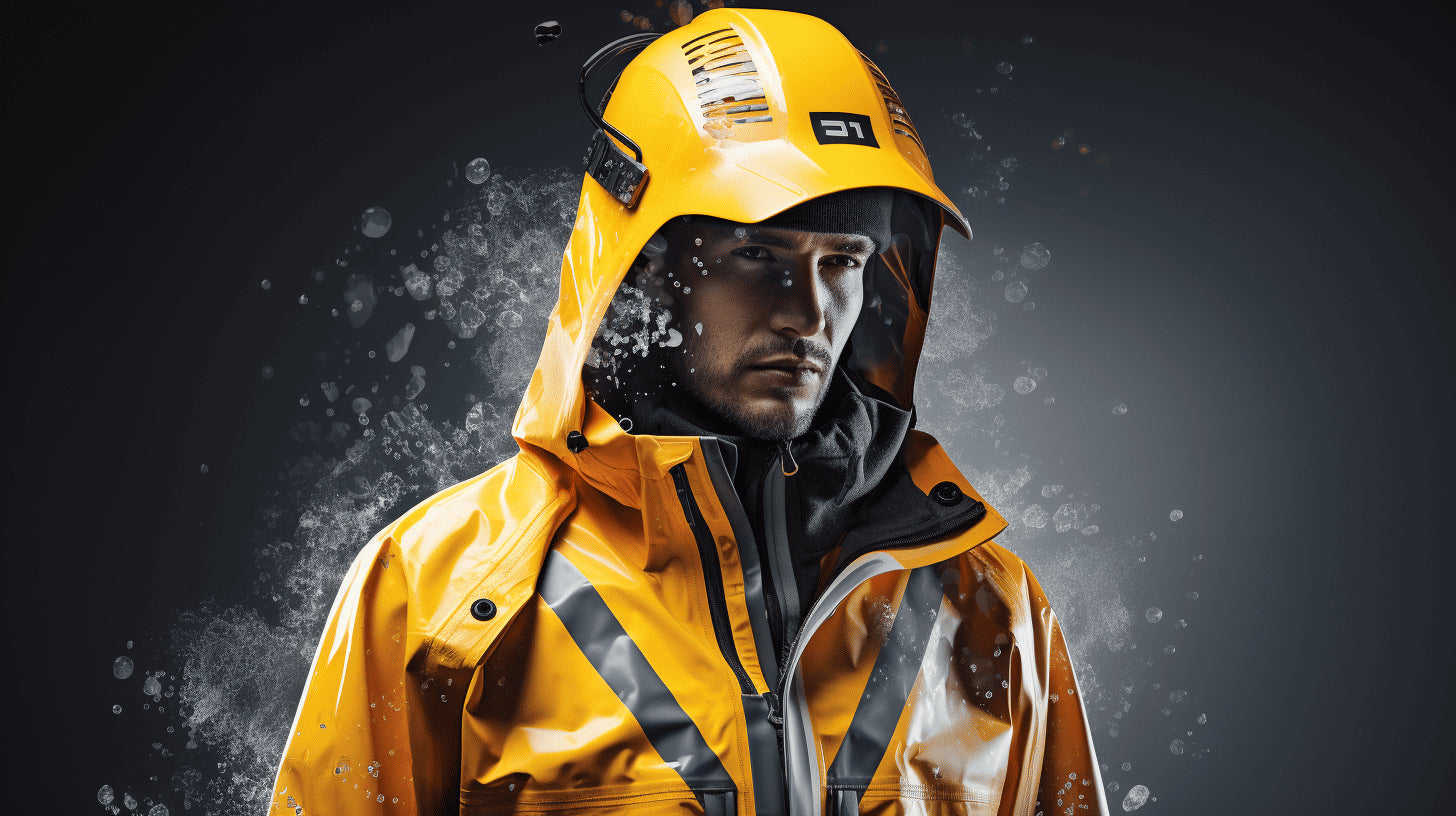

Leave a comment
This site is protected by hCaptcha and the hCaptcha Privacy Policy and Terms of Service apply.